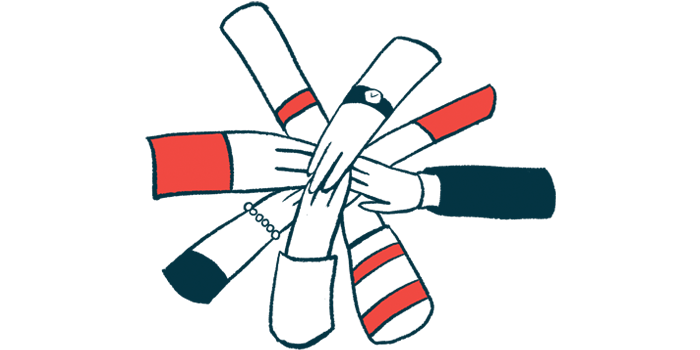C-Path to lead new task force seeking to advance LGMD therapies
No treatments are available to slow or stop limb-girdle MD progression

The Critical Path Institute (C-Path) is launching a task force to advance the development of therapies for limb-girdle muscular dystrophy (LGMD) and will lead the efforts of its members to find a new treatment to, among other goals, slow or stop the progression of the muscle-wasting disease.
Formed under the nonprofit’s Rare Disease Cures Accelerator-Data and Analytics Platform, known as RDCA-DAP, the initiative will bring together organizations and experts to overcome the challenges associated with LGMD drug development.
“Limb-girdle muscular dystrophies are a devastating group of diseases with significant unmet medical needs,” Alexandre Betourne, PhD, RDCA-DAP’s executive director, said in a press release. “By convening this task force, we are harnessing the collective strengths and knowledge of our members to drive forward the development of effective treatments for those affected by LGMDs.”
LGMDs refer to a group of disorders characterized by progressive muscle wasting at the shoulders and hips. The disorder is classified into subtypes based on the mode of inheritance and the specific gene that’s mutated in patients. More than 30 different subtypes of LGMD have been reported to date.
No therapies can slow or stop the disorder’s progression, and standard management focuses on physical or occupational therapy and other interventions that can help patients function in day-to-day life.
New C-Path task force for LGMD will include patient advocates
Thus far, the confirmed task force members are ML Bio Solutions, the Coalition to Cure Calpain 3, the CureLGMD2i Foundation, the Jain Foundation, the LGMD2D Foundation, the LGMD2i Research Fund, and The Speak Foundation. Talks are underway with both patient advocacy groups and individuals the nonprofit dubbed “key thought leaders” to ensure stakeholder involvement in these efforts.
“We are grateful for the opportunity to join the LGMDs Task Force to enhance collaboration between key stakeholders and advance the development of potential treatments for LGMDs,” said Doug Sproule, MD, chief medical officer at ML Bio Solutions.
ML Bio Solutions sponsored a natural history study on the LGMD subtype 2I/R9 to track disease progression in the absence of treatment and to validate a muscle biomarker.
“By providing our LGMD2I/R9 natural history data, we hope to increase the understanding of the progressive condition to improve the lives of those with LGMDs and their families,” Sproule said.
Through leveraging its members’ collective expertise, the task force will integrate patient data from several sources across LGMD subtypes via C-Path’s RDCA-DAP. That initiative, funded by the U.S. Food and Drug Administration, provides a centralized and standardized infrastructure to speed rare disease characterization. It will also identify and address the gaps in LGMD research and development.
Leveraging data from multiple sources and across LGMD subtypes in addition to collaborative knowledge sharing within the task force will be key to developing a clinically impactful drug developmental tool that helps accelerate therapies for patients living with high unmet needs in the LGMD community.
Heidi Grabenstatter, PhD, RDCA-DAP’s scientific director, is eager to get the task force rolling.
“I look forward to leading this effort with my colleagues from RDCA-DAP and Dr. Ramona Belfiore-Oshan, executive director for the Duchenne Regulatory Science Consortium (D-RSC),” Grabenstatter said. “Leveraging data from multiple sources and across LGMD subtypes in addition to collaborative knowledge sharing within the task force will be key to developing a clinically impactful drug developmental tool that helps accelerate therapies for patients living with high unmet needs in the LGMD community.”
The collaboration aims to serve as a neutral platform for stakeholders from the LGMDs community, industry, academia, and regulatory agencies to engage in dialogue and share data, thereby promoting therapeutic advancements for all LGMDs.
“At the Speak Foundation, we understand that collaboration and shared knowledge are the cornerstones of groundbreaking drug development,” said Kathryn Bryant Knudson, Speak Foundation founder. “This task force will harness data to forge powerful tools essential for innovation.”
For more information and to inquire about joining the RDCA-DAP task force on LGMDs, contact [email protected].







